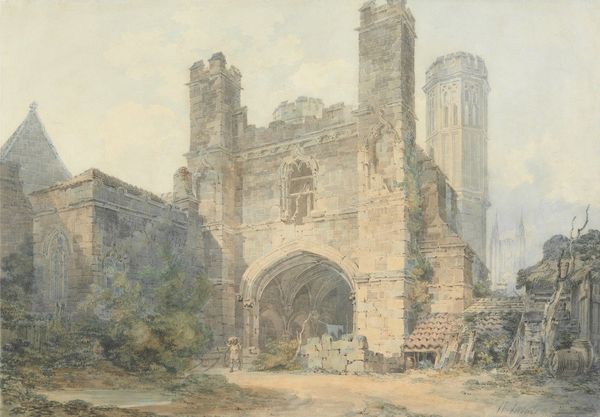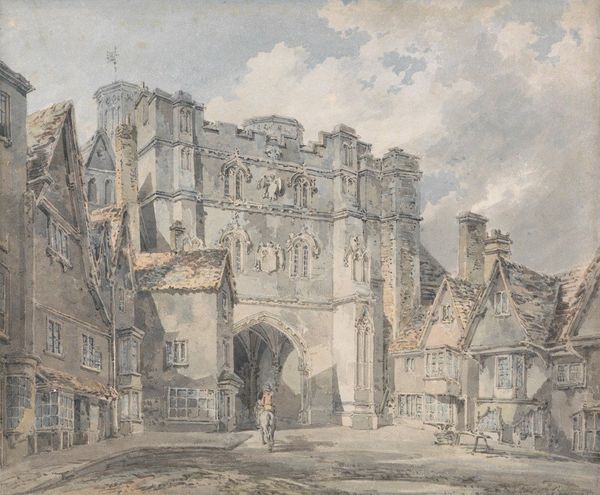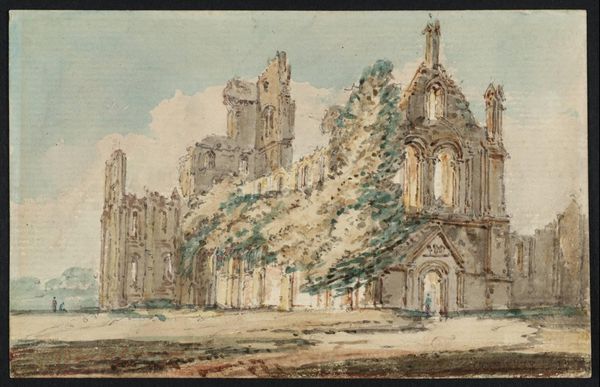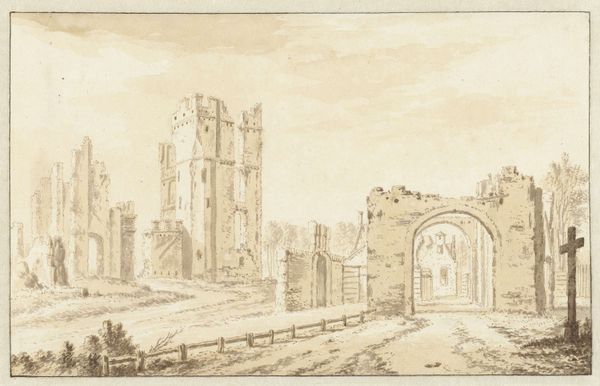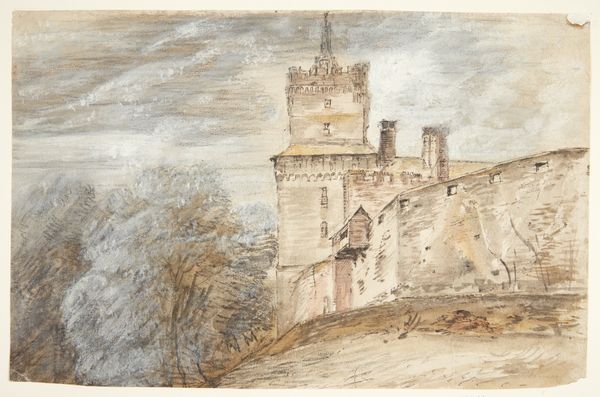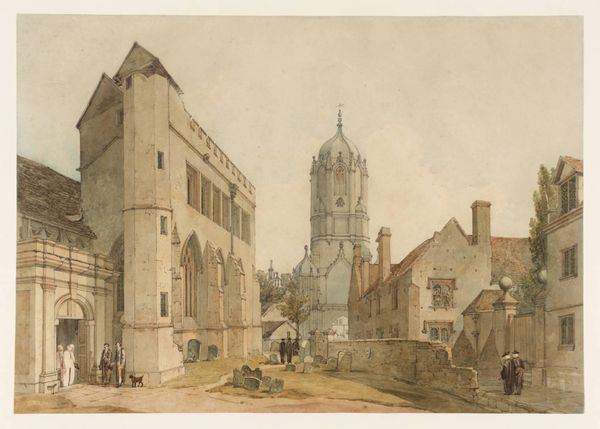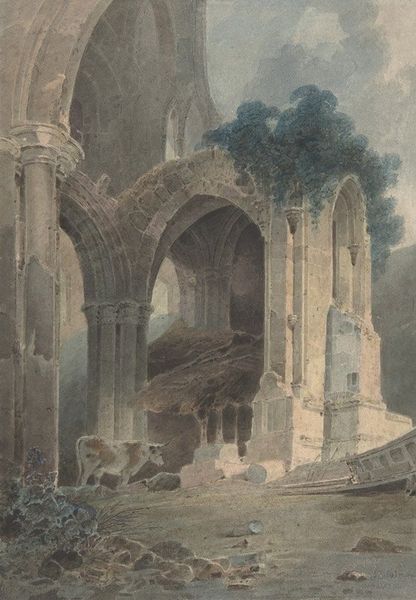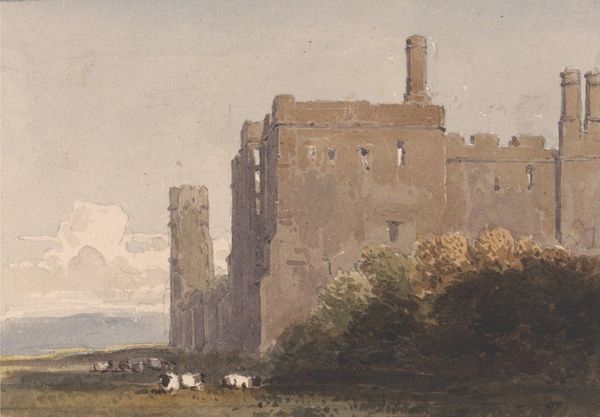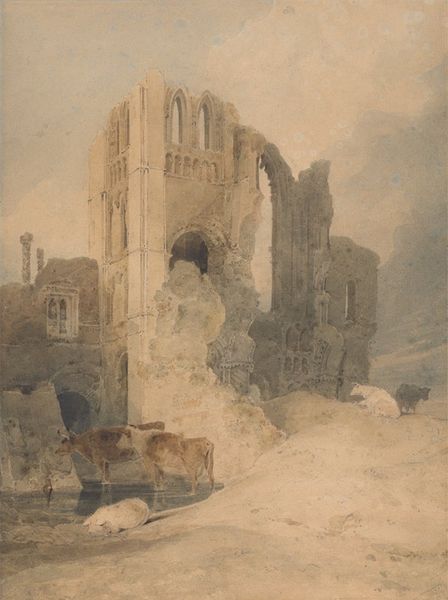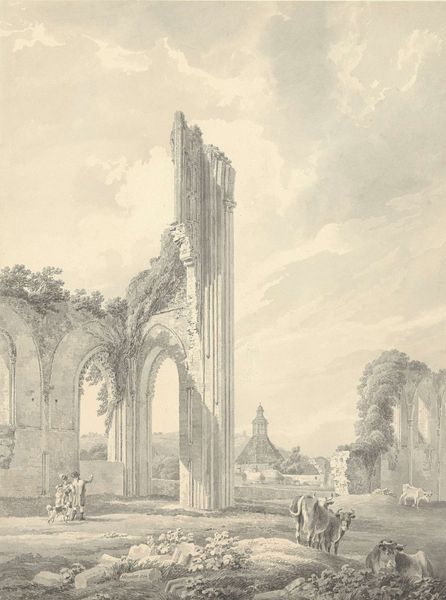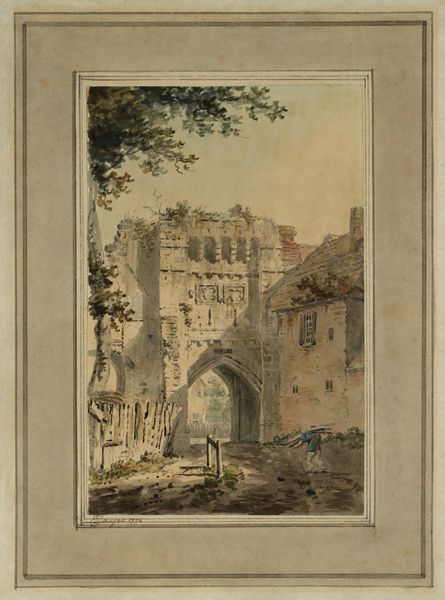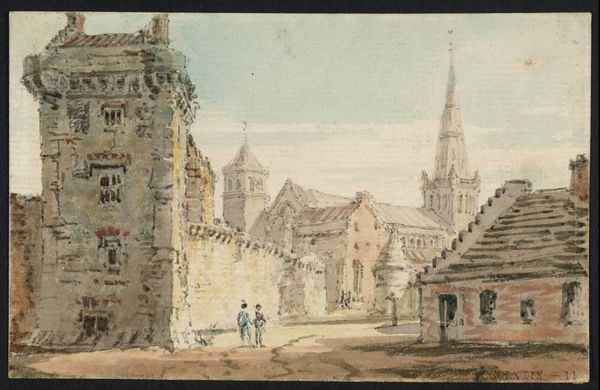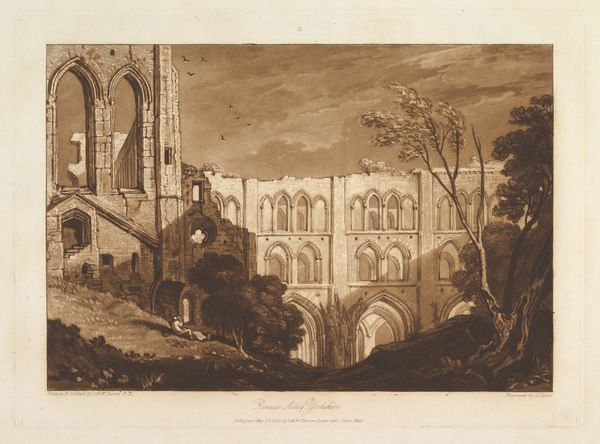
painting, watercolor
#
painting
#
landscape
#
charcoal drawing
#
watercolor
#
romanticism
#
cityscape
#
watercolor
Copyright: Public Domain: Artvee
Joseph Mallord William Turner made this watercolour of St. Augustine’s Gate in Canterbury, England, sometime in the late 18th or early 19th century. Turner’s Romantic vision often focused on the sublime power of nature, but here he turns his attention to the ruins of a religious building. Notice how the crumbling stone and open archway contrast with the domestic scene to the right. The gate, once a symbol of religious authority, is now decaying, nature reclaims what was once an important monument and hints at the transience of human institutions. Turner's choice of subject reflects the changing social and political landscape of England at the time. The rise of industrialization and the questioning of traditional authority led to a fascination with ruins, and the picturesque aesthetic, which celebrated the beauty of decay and the power of nature. To fully appreciate Turner's vision, we must consider the social, cultural, and institutional forces that shaped his art. By exploring historical archives and critical writings, we can gain a deeper understanding of the complex meanings embedded in his work.
Comments
No comments
Be the first to comment and join the conversation on the ultimate creative platform.
